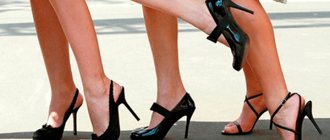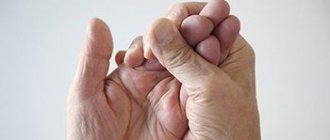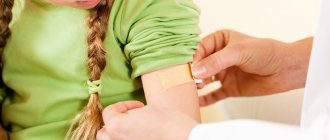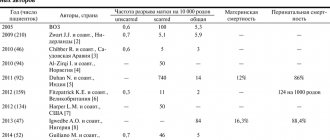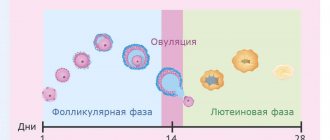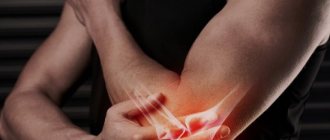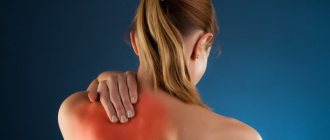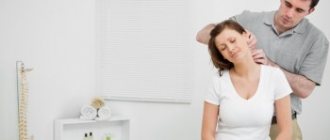Tendon - a special structure of collagen fibers with which muscles are attached to bones. Tendons transmit muscle force to the skeleton and play an important role in providing movement. Thanks to their collagen composition, these structures are very strong and have little stretch. Sometimes there is a danger - damage to the tendons of the limbs. If trauma is ignored, it can cause a number of dangerous consequences. Can a tendon heal and how to treat its ruptures? Specialists at Ladisten Clinic answer these questions.
What are tendons
Visually, the tendon is a bundle of threads. This is the part of the muscle with which it is attached to the bone. Often ordinary people confuse tendons and ligaments, the first of them are located between the muscles and bones, and the second fix the bones in the joint.
Ligaments provide mobility to the joint. The function of tendons, or hamstrings, is to transmit forces from muscles to bones.
Tendons are made up of connective tissue made up of different types of collagen fibers. They come in various shapes and have a specific structure, due to which they have high strength, but have little stretch.
With age, there is a weakening of the tendons, which can even with minor loads lead to tears - that is, partial disruption of the integrity of the tendon bundles. This can occur in both the central and peripheral areas of the tendon.
Treatment of tendon injuries is carried out by a traumatologist, surgeon, or osteopath.
Partial tendon rupture: causes
If we talk about people who engage in intense training or professional sports, the cause of such damage most often lies in insufficiently warmed muscles. Every athlete knows that before exercise it is necessary to warm up their muscles. However, it is not always possible to complete this fully, and as a result, the tendons may suffer.
Muscles that are not ready for increased loads and sudden movements contract irregularly and too strongly. As a result, during a particular exercise, such muscle tension leads to tendon damage.
Also, athletes and workers of heavy physical labor constantly experience microtraumas of the tendons from overexertion. Bundles of collagen fibers “wear out” and partially break. The situation gets worse if treatment is not carried out immediately and fully. Over time, the muscle whose tendon has been damaged shortens, and each repeated injury worsens its physical and functional condition. In such cases, it is difficult to restore the anatomical integrity of the tendon using therapeutic methods.
There is a high probability that a complete rupture of the tendon will occur; treatment will then be carried out surgically.
In addition to the above negative factors, tendon fibers can tear for the following reasons:
- ·impacts with a blunt object (direct mechanical damage);
jumping and unsuccessful landing;
falling on an outstretched arm;
sudden movements, jerks;
lifting loads;
weakening of tendons due to general aging of the body.
Partial tendon ruptures also occur due to the individual characteristics of the body. These may be pathologies such as, for example, congenital abnormalities of connective tissue or other degenerative processes in tendon bundles, muscles and joints.
The condition, degree of strength and functionality of the tendons is influenced by nutrition, the level of immunity, and the use of alcohol and tobacco.
Separately, mention should be made of the open type of damage, in which the tendons are torn due to open wounds. For example, workplace injuries often occur in which the hands are partially or completely damaged.
Long-term inflammation of shoulder components
Long-term inflammation of shoulder components
Determining the causes is a mandatory activity that is carried out during a diagnostic examination and makes it possible to select the most adequate therapeutic tactics and prevent the recurrence of changes.
Signs and methods for diagnosing partial tendon rupture
Regardless of the location of the damage, with injuries of this type, patients complain of the same symptoms:
- pain of an acute, sharp nature;
weakening of the joint;
redness of the skin;
·limitation of mobility of the injured limb;
tumor, edema, hematoma;
· in some cases – a local increase in temperature.
Since similar signs are observed with sprained ligaments, various dislocations and subluxations, only a qualified specialist should diagnose the damaged tendon and treat it.
The doctor must examine the site of injury, ask the patient about the nature of the injury and sensations, and examine the area using palpation. In most cases, with a partial rupture of the hamstring, the victim can move the injured limb, so the specialist can conduct something like testing: he will ask you to perform some exercises and evaluate the result.
In addition, an x-ray will be taken, the results of which will refute or confirm the presence of a tendon rupture.
Other examinations if such injuries are suspected:
- ·angiography;
MRI;
· Ultrasound;
Ultrasonography
Orthopedics and traumatology services at CELT
The administration of CELT JSC regularly updates the price list posted on the clinic’s website. However, in order to avoid possible misunderstandings, we ask you to clarify the cost of services by phone: +7
| Service name | Price in rubles |
| Appointment with a surgical doctor (primary, for complex programs) | 3 000 |
| Ultrasound of soft tissues, lymph nodes (one anatomical zone) | 2 300 |
| MRI of soft tissues (one anatomical region) | 6 000 |
All services
Make an appointment through the application or by calling +7 +7 We work every day:
- Monday—Friday: 8.00—20.00
- Saturday: 8.00–18.00
- Sunday is a day off
The nearest metro and MCC stations to the clinic:
- Highway of Enthusiasts or Perovo
- Partisan
- Enthusiast Highway
Driving directions
Shoulder tendon injuries: treatment
The shoulder joint is the most rotating joint in our body. Stability and mobility of the shoulder is provided by the so-called rotator cuff (a structure of muscles and tendons). Due to the peculiarity of their structure and functioning, damage to tendon bundles in this area occurs most often when a person receives a strong blow to this area or frequently lifts heavy objects. Such injuries also occur among teachers who have to write a lot on the board, tearing the shoulder joint.
Falling on an elbow or an outstretched arm also leads to a sharp contraction of the shoulder muscles, which can ultimately cause damage to the tendon.
With such injuries, in some cases an oval-shaped swelling appears, visually noticeable when the patient flexes the forearm. The doctor makes a diagnosis of partial tendon rupture based on clinical signs and the results of an ultrasound or x-ray.
Minor tendon end divergence can be successfully eliminated with conservative treatment. First aid for such injuries is cryotherapy. Ice or (in camping conditions) a bandage moistened with cold water is applied to the damaged area. Cold compresses should be applied 4-5 times a day for the first three days after the injury.
Immediately, the joint should be immobilized using an immobilizing bandage. Fixation of the limb using this method should last 3-4 days. In some cases, you will also need a special outlet bus.
To eliminate pain, patients are prescribed analgesics (NSAIDs).
The rehabilitation period includes a complex of physical procedures and therapeutic massage (according to indications).
In case of complete rupture of the tendon, surgery to stitch the tissue is prescribed.
Description of the disease
Rotator cuff
– anterior outer part of the capsule of the shoulder joint. It combines the tendons of the supraspinatus, infraspinatus, and teres minor muscles. Despite the difference in the functions they perform, such an anatomically close location of fixation of the muscles allowed traumatologists to identify them in a common group (the rotator cuff).
Damage to the rotator cuff can be considered a rupture of one or a group of tendons that make up its composition. Most often this is caused by injury, dislocation or previous chronic inflammatory process.
Achilles tendon injuries: treatment
Achilles injuries are professional injuries of tennis and basketball players. It is in these sports that repeated and sharp jumps are required, the incorrect execution of which leads to tendon rupture. Excessive loads in this area also undermine the condition of the tendon bundles.
In addition, the Achilles tendon can lose its integrity as a result of a person falling from a height or sudden bending of the foot (for example, when the toe falls into a hole).
Football players often suffer from injuries of this nature. This is due to the fact that during the game you can receive a random but strong blow from the opponent on the back of the shin.
At the moment of rupture, a crash is heard, the victim experiences acute pain, and the leg in the indicated area rapidly swells. With such injuries, a person is not able to bend the foot down and lean on the injured limb.
Treatment first requires immobilization of the affected leg. The doctor, having ascertained a partial rupture of the Achilles tendon, applies a plaster cast or fixes the foot using a special orthosis. In this case, the heel should be raised (this position will help the torn ends of the tendon bundles recover faster).
Therapy consists of using cold compresses in the first days after injury and taking non-steroidal anti-inflammatory drugs. Next, physiotherapy, exercise therapy, massage, and other activities aimed at developing the joint are prescribed.
In some cases, patients are prescribed to wear special orthopedic shoes for some time after the injury.
Treatment of tendon ruptures occurs almost the same way, regardless of the location of the damage. The differentiation of therapeutic methods depends on the individual characteristics of the injury and the general condition of the patient. Age, gender, degree and nature of damage, the presence of old injuries of this kind, and the condition of the musculoskeletal system as a whole are taken into account.
Methods of fixing joints also differ. In some cases, a bandage is sufficient, in others a splint or orthosis is required.
Preventing tendon injuries
The tendon bundles are protected from tears and overstrains by elastic fabric. Accordingly, to prevent injuries and strengthen the muscular system (and, separately, tendons), it is necessary to lead an active lifestyle, eat right, and avoid bad habits, thereby developing tissue plasticity. In addition, specialists at the Osteopolyclinic Medical Center recommend regularly performing a certain set of exercises aimed at strengthening and developing tendon flexibility.
As a rule, this is a complex consisting of static exercises, without much physical effort and sudden movements. Muscles require active, intense training, but before you begin, you need to prepare the tendons through various types of stretching. Pilates is very good in this sense. Regular charging, carried out carefully and smoothly, is also suitable for these purposes. At this time, the tendons are filled with oxygen, blood supply improves, nutrients are better absorbed and give the collagen fibers sufficient elasticity.
Take care of your tendons, but do not limit their mobility, but try to move as flexibly as possible.
